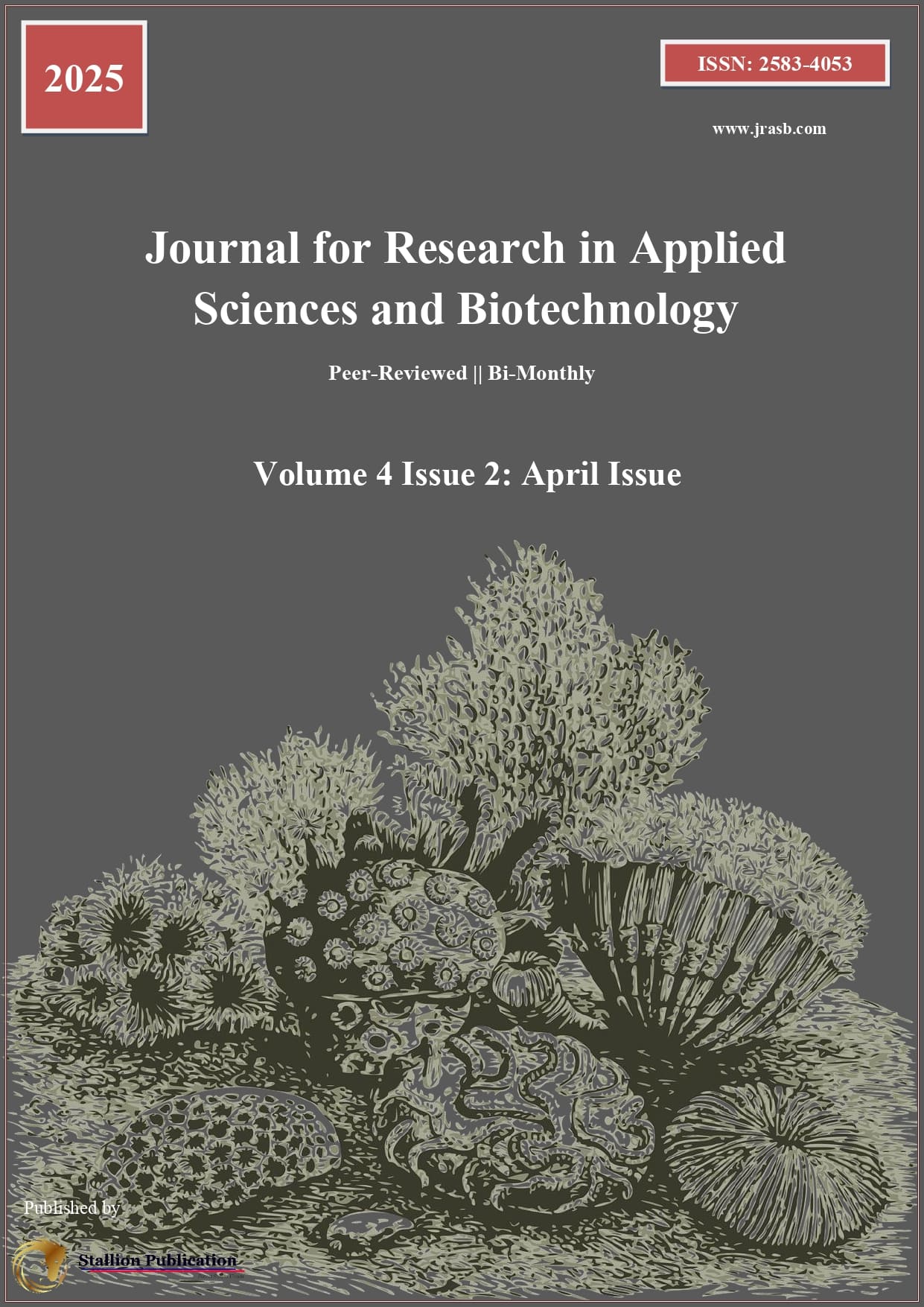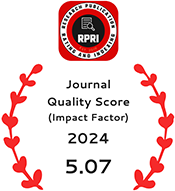Impact of Marble Industry Effluents on Soil: A Study of Contaminant Dynamics and Pesticide Interactions
DOI:
https://doi.org/10.55544/jrasb.4.2.2Keywords:
Marble industry, soil contamination, heavy metals, pesticide interactions, environmental impact, soil remediationAbstract
The marble company generates significant effluents including heavy metals, alkaline chemicals, and suspended particles, which might greatly change soil properties and influence agricultural sustainability. Emphasizing contamant dynamics and pesticide interactions, this study investigates how marble industry effluents affect soil contamination. Obtained at various distances surrounding marble manufacturing sites, soil samples were investigated for heavy metal contents, physicochemical properties, and pesticide dynamics. The results revealed that in certain areas the amounts of lead (Pb), cadmium (Cd), chromium (Cr), and nickel (Ni) were much higher in contaminated soils than WHO safety limits. The effluents changed organic matter content, raised soil alkalinity (pH > 8.5), and reduced the availability of key minerals. Pesticide adsorption was raised in polluted soils, leading to longer breakdown rates and maybe environmental risks. The findings show that marble industry effluent cause extended soil degradation and disrupt natural pesticide interactions, thereby affecting agricultural productivity and environmental well-being. Reducing these consequences calls for the use of sustainable agricultural methods, soil remedial technology, and wastewater treatment. This study emphasizes the urgent necessity of greater research on remedial techniques to restore soil quality in affected areas as well as of legislative actions.
Downloads
References
Li, X., Song, Y., Jia, M., Wang, F., Bian, Y., & Jiang, X. (2021b). Sorption and desorption characteristics of sulfamethazine in three different soils before and after removal of organic matter. Pedosphere, 31(5), 796–806. https://doi.org/10.1016/s1002-0160(21)60026-7
Senesi, N. (1992). Binding mechanisms of pesticides to soil humic substances. The Science of the Total Environment, 123–124, 63–76. https://doi.org/10.1016/0048-9697(92)90133-d
Wei, T., Guizhen, L., Mei, B., Min, Y., Jinhui, P., Barrow, C. J., Wenrong, Y., & Hongbin, W. (2015). The study of adsorption mechanism of mixed pesticides prometryne-acetochlor in the soil–water system. International Biodeterioration & Biodegradation, 102, 281–285. https://doi.org/10.1016/j.ibiod.2015.04.005
Sharma, A., Kumar, V., Shahzad, B., Tanveer, M., Sidhu, G. P. S., Handa, N., Kohli, S. K., Yadav, P., Bali, A. S., Parihar, R. D., Dar, O. I., Singh, K., Jasrotia, S., Bakshi, P., Ramakrishnan, M., Kumar, S., Bhardwaj, R., & Thukral, A. K. (2019). Worldwide pesticide usage and its impacts on ecosystem. SN Applied Sciences, 1(11). https://doi.org/10.1007/s42452-019-1485-1
Scotti, R., Conte, P., Berns, A., Alonzo, G., & Rao, M. (2013). Effect of organic amendments on the evolution of soil organic matter in soils stressed by intensive agricultural practices. Current Organic Chemistry, 17(24), 2998–3005. https://doi.org/10.2174/13852728113179990125
Al-Ahmadi, M. S. (2019). Pesticides, anthropogenic activities, and the health of our environment safety. In IntechOpen eBooks. https://doi.org/10.5772/intechopen.84161
Zhou, Y., He, G., Jiang, X., Yao, L., Ouyang, L., Liu, X., Liu, W., & Liu, Y. (2021). Microplastic contamination is ubiquitous in riparian soils and strongly related to elevation, precipitation and population density. Journal of Hazardous Materials, 411, 125178. https://doi.org/10.1016/j.jhazmat.2021.125178
Cervera, C. H. (2017). Fate and effects of waterborne contaminants of emerging concern in the soil-plant system : impact of biochar soil amendment to mitigate their plant uptake. https://doi.org/10.5821/dissertation-2117-112421
Ayilara, M., Olanrewaju, O., Babalola, O., & Odeyemi, O. (2020). Waste Management through Composting: Challenges and Potentials. Sustainability, 12(11), 4456. https://doi.org/10.3390/su12114456
Pérez-Lucas, G., Vela, N., Aatik, A. E., & Navarro, S. (2019). Environmental Risk of Groundwater Pollution by Pesticide Leaching through the Soil Profile. In IntechOpen eBooks. https://doi.org/10.5772/intechopen.82418
Çıra, S. C., Dağ, A., & Karakuş, A. (2018). Investigation of the Effects of Marble Material Properties on the Surface Quality. Advances in Materials Science and Engineering, 2018(1). https://doi.org/10.1155/2018/6514785
Shah, N. S. N. (2022). Impact of Industrial Pollution on Our Society. Pakistan Journal of Science, 73(1). https://doi.org/10.57041/pjs.v73i1.646.
Fang, S., Hua, C., Yang, J., Liu, F., Wang, L., Wu, D., & Ren, L. (2024). Combined pollution of soil by heavy metals, microplastics, and pesticides: mechanisms and anthropogenic drivers. Journal of Hazardous Materials, 485, 136812. https://doi.org/10.1016/j.jhazmat.2024.136812
Rasool, S., Rasool, T., & Gani, K. M. (2022). A review of interactions of pesticides within various interfaces of intrinsic and organic residue amended soil environment. Chemical Engineering Journal Advances, 11, 100301. https://doi.org/10.1016/j.ceja.2022.100301
Zheng, K., Huang, S., Chen, L., Yu, Y., Zheng, M., Yu, H., Zhou, Y., & Meng, X. (2024). Adsorption–desorption behavior of pesticides in soil environment: a systematic review. International Journal of Environmental Science and Technology. https://doi.org/10.1007/s13762-024-06077-7
Downloads
Published
How to Cite
Issue
Section
License
Copyright (c) 2025 Hanumant Singh

This work is licensed under a Creative Commons Attribution-NonCommercial-NoDerivatives 4.0 International License.














